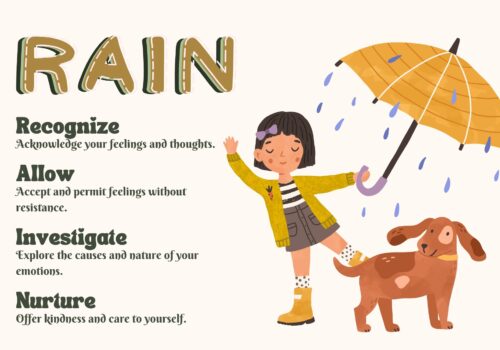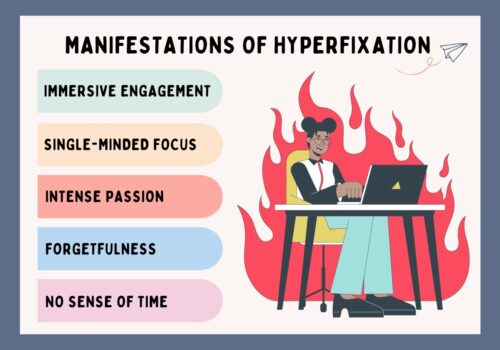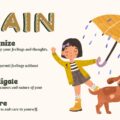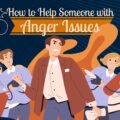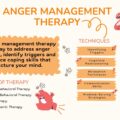What is Anxiety?
Anxiety is like a feeling of worry in your stomach that suddenly creeps up on you and won’t go away. It typically happens before events that require you to perform specific tasks, such as exams, diagnostic tests, and medical procedures. Yes, even Scanxiety, the fear of diagnostic scans, is a thing nowadays.
In normal circumstances, anxiety is a natural response to a perceived threat. It is accompanied by a surge of adrenaline, an increased heart rate, and heightened alertness as all part of this response. But Generalized anxiety disorder (GAD) Anxiety can occur even without a threat. In such cases, anxiety engulfs you with excessive and uncontrollable fear and worry about almost everything. When you are prone to extreme anxiety, you get anxious about just about anything: your health, your losses, your job, relationships, and more.
Common anxiety prepares you for gearing up for a challenge, but dysfunctional anxiety becomes more of an unwanted companion impacting your daily life and mental well-being. Cognitive behavioral therapy helps treat anxiety with a comprehensive approach targeting not the content of the worry but the behavior itself.
Symptoms of Anxiety
Anxiety doesn’t always announce itself with flashing neon signs; sometimes, it tiptoes into your life, gradually taking over. Here are some common symptoms to watch out for:
- Excessive Worry: Anxiety often manifests as excessive, irrational worry about everyday situations, from finances and relationships to health.
- Physical Symptoms: Anxiety can wreak havoc on your body, leading to rapid heartbeat, sweaty palms, muscle tension, trembling and panic attacks
- Restlessness: Another common symptom is feeling on edge, restless, or constantly fidgeting.
- Trouble Concentrating: Anxiety can make it challenging to concentrate or make decisions, leaving you overwhelmed and mentally drained.
- Sleep Disturbances: Sleep becomes elusive, with anxious thoughts keeping you up at night or causing restless, fragmented sleep.
- Avoidance: People with Anxiety often avoid situations or places that trigger their anxiety, which can lead to a limited and restricted life.
- Irrational Fears: Phobias and irrational fears can take root, causing distress even when there’s no immediate threat.
Cognitive Behavioral Therapy Can Treat Several Anxiety Disorders
According to research, cognitive behavioral therapy (CBT) is now among the leading treatments for anxiety disorders with or without medication. It is now considered the gold standard of treatment due to extensive evidence supporting its effectiveness in reducing symptoms in people with several anxiety disorders and phobias. Moreover, CBT works for a longer term, even outdoing medication and is a more preferred route given the side effects of some anxiety disorder drugs. There are different types of anxiety, and Cognitive behavioral therapy has different approaches for each. However, the core of the model, replacing negative thought patterns and behavior, remains common.
- Generalized Anxiety Disorder
- Panic Disorder
- Obsessive Compulsive Disorder
- Social Anxiety Disorder
- Prolonged Grief Disorder
- Agoraphobia
- Separation Anxiety Disorder
- Noise Sensitivity Anxiety
- Various Phobias
How CBT can Treats Anxiety
CBT implements several techniques and strategies to treat anxiety. In most cases, it is a multi-pronged approach of helping a patient understand, acknowledge, and manage negativity gradually replacing it with healthier thoughts and behavior.
Anxiety Psychoeducation: Psychoeducation educates afflicted people about how anxiety disorder develops, how symptoms form, how they remain, and what can be done about them. This takes just a few sessions with a client, depending on their understanding and the complexity of the anxiety.
Identifying Negative Thought Patterns: CBT helps you recognize and challenge the negative thoughts that fuel anxiety. It teaches you to distinguish between rational and irrational fears, allowing you to gain perspective on your worries and improve your functioning by changing negative thought patterns and behavior. Joint exercises for tracking thought patterns in anxiety are:
- Thoughts during the day when stress and anxiety are increased.
- Emotional intensity during episodes of anxiety ranging from minor nervousness to panic attacks
- Anxiety response and behavior
- Circumstances, or thinking patterns such as fear of the future, death, etc., that trigger thoughts that lead to anxiety
Exposure Therapy: Anxiety makes you avoid situations that trigger panic. CBT integrates gradual exposure therapy to feared situations or objects and helps desensitize you, reducing anxiety and building confidence over time.
Building Resilience: Through CBT, individuals learn to develop emotional resilience, allowing them to bounce back from setbacks and handle stressors more effectively.
Thought Stopping: CBT helps people develop thought-stopping skills that interrupt and replace negative thought patterns with positive, healthy ones. Thought stopping uses verbal and visual mental commands such as STOP or NO. To make this more effective, you can visualize a hand or a stop sign, especially when anxiety comes with thoughts about events that haven’t happened.
Reframing Thoughts: Reframing thought patterns can help people adjust and manage anxiety better. Thought reframing leads to more effective responses through rational thinking patterns at a time when a person may seem most emotional. Reframing thoughts also helps in confidence building and treating low self-esteem.
Challenging Thoughts: Challenging thoughts are a precursor for thought reframing. CBT helps you challenge your irrational thoughts, like thinking about evidence if the thought can be true or untrue. Considering viable explanations against beliefs and assumptions enables you to recognize and reframe such thoughts regarding them as distortions that you don’t need to pay attention to.
Relaxation Skills: Relaxation skills help soften the negative impact of anxiety and decrease symptoms for more long-term effectiveness. In addition, Practice mindfulness to stay grounded in the present, and deep breathing can calm you down.
Journaling and Goal Setting: Journaling is a great way to record patterns involving episodes, negative thoughts, and triggers. It also helps a therapist understand a patient and what they could be going through to formulate more effective and accurate treatment. Goal setting includes achieving small self-esteem, confidence, and anxiety management milestones.
Distraction: Distracting yourself in an anxiety attack diverts your mind from the developing thought process, which makes it worse. Examples of distraction involve watching TV, a movie, listening to music, going for a walk, and more.
CBT Techniques You Could Try at Home
While CBT for anxiety is best administered by a professional, there are some exercises that individuals can even practice at home. These are small skills and activities that help people understand their thoughts and behaviors to effect change.
- Start being aware of your thoughts; do not fight or dismiss them
- Make an evaluation of your developing thought process and behavior
- Use positive affirmations by placing notes in important areas and reminding yourself how to feel. These could be mantras or phrases that motivate you to relax, take a break or do some deep breathing
- Talk to yourself, tell yourself there is nothing to fear and this is just a passing phase with no validity or rationality. It is pointless to think this way
- Do the opposite of what you feel. For example, if you feel like withdrawing inward, call up a friend.
- Follow up on CBT apps which can provide valuable support
Does CBT Work for Everyone?
Cognitive Behavioral Therapy covers a wide range of techniques for different anxiety disorders. Thus, the effectiveness of the therapy depends on the individual and the type of treatment. A patient and therapist working together can best identify the strategies that work for them and those that do not.
Anxiety doesn’t have to be an unwelcome constant in your life. Cognitive Behavioral Therapy offers a path toward relief and a brighter, more peaceful future. It empowers you to take control of your thoughts and behaviors, enabling you to manage anxiety effectively. CBT for anxiety focuses more on achieving long-term management of mental disorders and helping an afflicted person live a more fulfilling life by building confidence and inducing peace of mind.





